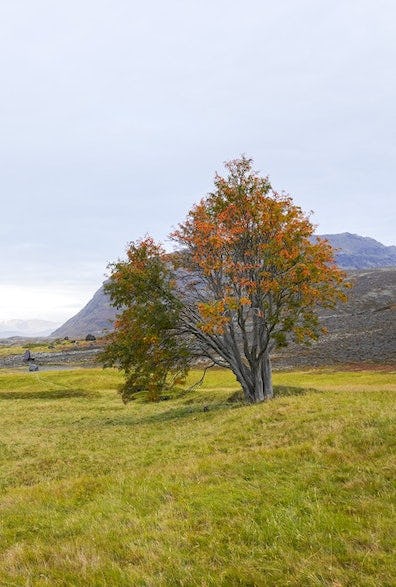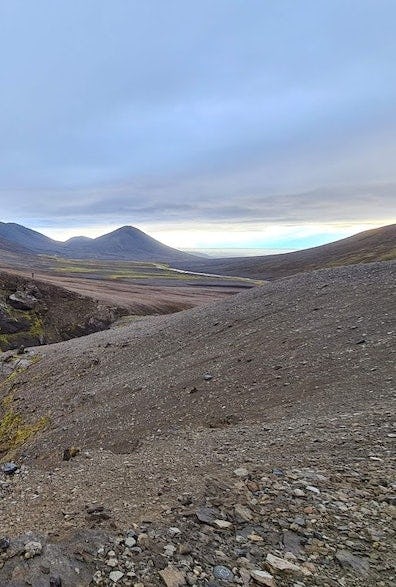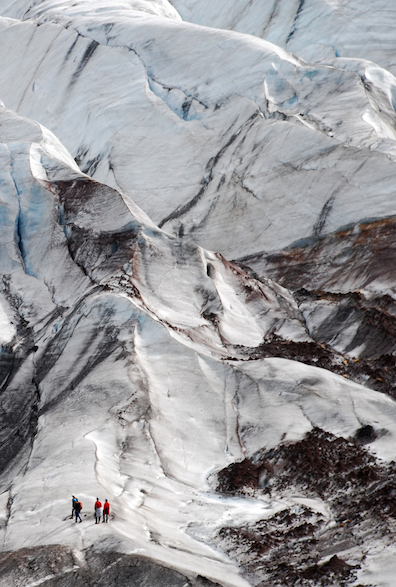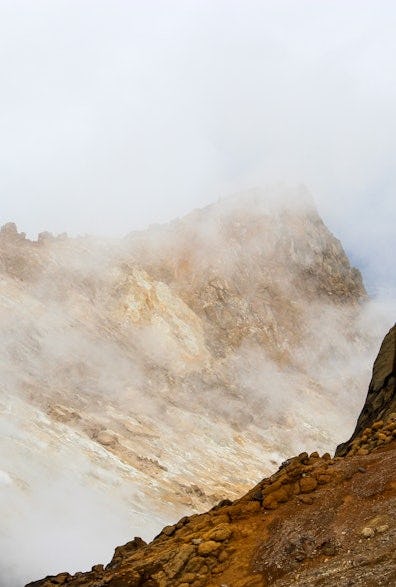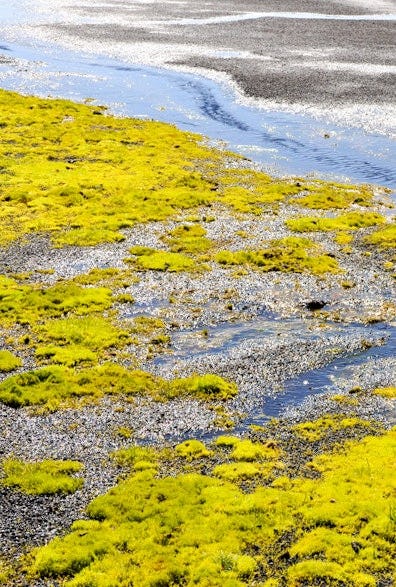Landscape
The landscape in Vatnajökull National Park is characterised by diversity and contrasts, and the geological variety that can be found there is unique on a global level. The National Park has steep mountains, flat glacial plains, and everything in between. The contrasts in the landscape are not the least apparent in its colourful nature, and each area in the National Park has its identifying colours. These colours appear in varied shades and shapes that distinguish one area from another, there are black sands, grey rocks, brown glacial rivers, green moss and forests, red volcanic slag and clay from hot springs, colourful rhyolite, white glacier and blue sky.

The landscape of the National Park is shaped by the synergy between volcanoes and glaciers. It bears witness to lava flows, geothermal activity, hyaloclastite ridges and table mountains, terminal moraines, ice dammed lakes and glacial plains, with the ice sheet looming above. At the south part of Vatnajökull there are coastal areas and open sea.

Landscape
The landscape in the National Park can be roughly divided into a number of main categories. Beyond the glacier itself there is a plateau on which stand separate mountains, many of which bear the marks of having been eroded by the glacier. The northernmost and southernmost areas have flood plains, and there are heathlands to the southwest and northeast. The area west and north of the glacier is dominated by hyaloclastite ridges, whereas to the north there are canyons and hills.
In addition to these rough forms, the more detailed features of the landscape are carved out by volcanic activity, erosion and the material carried along with glaciers and glacial waters, and also by geothermal activity. The diverse environment results in ecosystems characterised by a wide variety of plants and birdlife.
